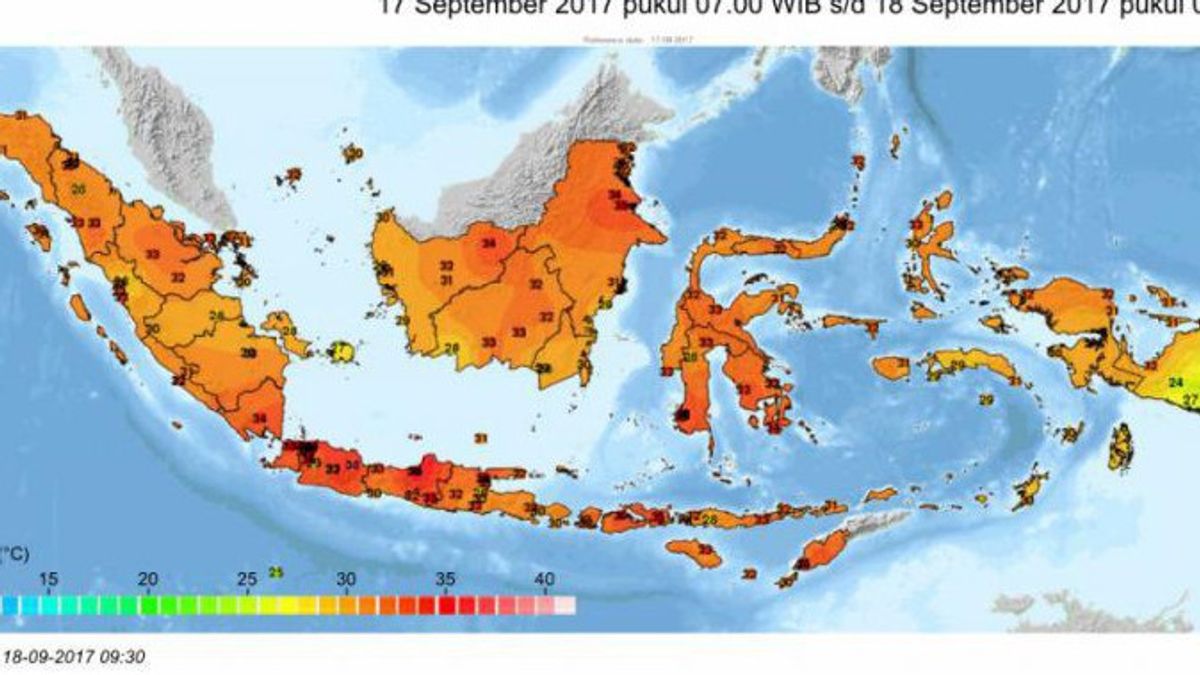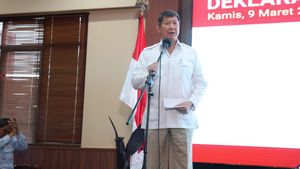JAKARTA - The Meteorology, Climatology and Geophysics Agency (BMKG) noted that currently most areas have entered the peak of the rainy season, so it is necessary to be aware of the occurrence of extreme weather.
"Currently, most parts of Indonesia, 94 percent of the 342 Season Zones, have entered the rainy season," said BMKG Head Dwikorita Karnawati in a release received in Jakarta, as reported by Antara, Tuesday, January 19.
Most of the areas that have entered the peak of the rainy season, especially Java, Bali, South Sulawesi and Nusa Tenggara.
Dwikorita explained that currently the unstable dynamics of the atmosphere in the next few days could potentially increase the growth of rain clouds in several regions of Indonesia.
This condition was triggered by the strengthening of the Asian Monsoon which was marked by the stronger cross-equatorial wind flow in the Karimata Strait, reinforced by the influence of the presence of the tropical equatorial atmosphere waves Madden Julian Oscillation (MJO) and Rossby Waves which are currently active in Indonesia.
The presence of the MJO can be superposed to the strengthening of the Asian Monsoon which can be accompanied by the emergence of a cold surge phenomenon in the South China Sea.
In addition, several cyclonic circulations were observed in southern Indonesia and northern Australia which led to the formation of bends, convergence and deceleration of wind speed (convergence), thereby increasing the growth of supersellular cloud clusters that have the potential to cause high rainfall.
Deputy for Climatology Herizal explained that the peak of the rainy season in the region is expected to last until February 2021.
"We urge the public and all parties to continue to be aware of the potential for extreme weather which tends to increase during the peak period of this rainy season," said Herizal.
Meanwhile, Deputy for Meteorology Guswanto added that the potential for extreme weather is predicted to occur on January 18-24, 2021, especially in the regions of Aceh, North Sumatra, West Sumatra, Riau, Jambi, South Sumatra, Lampung and Banten.
In addition, there were also DKI Jakarta, West Java, Central Java, Yogyakarta, East Java, Bali, West Nusa Tenggara, East Nusa Tenggara, Central Kalimantan, North Kalimantan, East Kalimantan, South Kalimantan, North Sulawesi, Central Sulawesi, South Sulawesi, Southeast Sulawesi, North Maluku, West Papua, and Papua, so it needs to be watched out.
This extreme weather has the potential to cause the impact of hydrometeorological disasters, such as floods, flash floods, landslides that can endanger the public, as well as heavy rain accompanied by lightning and high waves that endanger shipping and aviation.
The English, Chinese, Japanese, Arabic, and French versions are automatically generated by the AI. So there may still be inaccuracies in translating, please always see Indonesian as our main language. (system supported by DigitalSiber.id)













